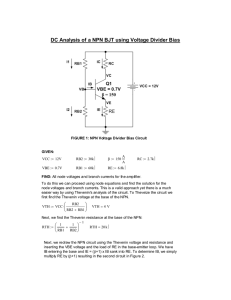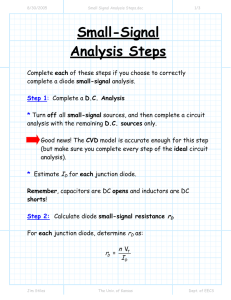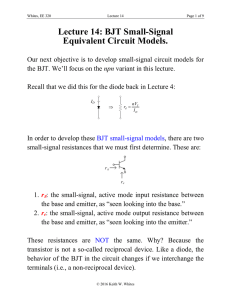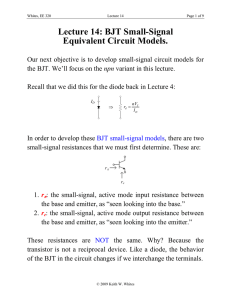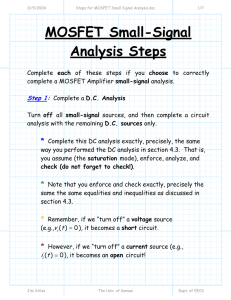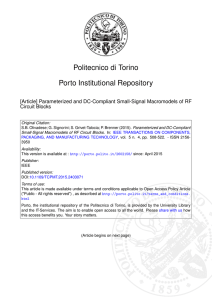INCREMENTAL (SMALL SIGNAL) ANALYSIS What it is A method of
advertisement
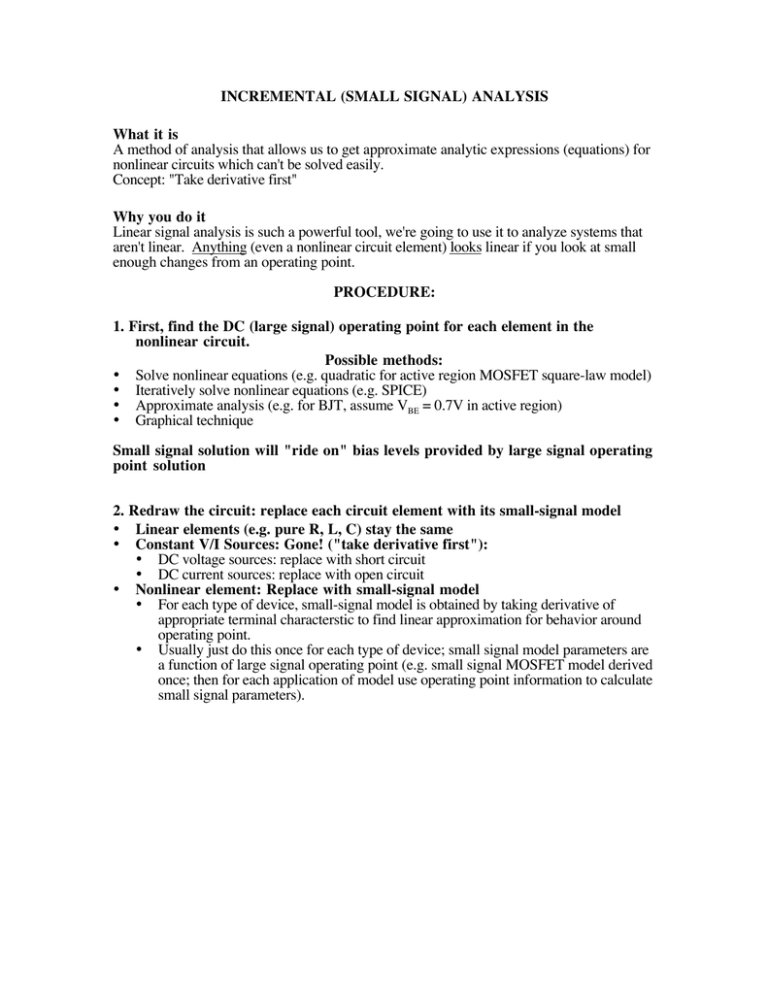
INCREMENTAL (SMALL SIGNAL) ANALYSIS What it is A method of analysis that allows us to get approximate analytic expressions (equations) for nonlinear circuits which can't be solved easily. Concept: "Take derivative first" Why you do it Linear signal analysis is such a powerful tool, we're going to use it to analyze systems that aren't linear. Anything (even a nonlinear circuit element) looks linear if you look at small enough changes from an operating point. PROCEDURE: 1. First, find the DC (large signal) operating point for each element in the nonlinear circuit. Possible methods: • Solve nonlinear equations (e.g. quadratic for active region MOSFET square-law model) • Iteratively solve nonlinear equations (e.g. SPICE) • Approximate analysis (e.g. for BJT, assume VBE = 0.7V in active region) • Graphical technique Small signal solution will "ride on" bias levels provided by large signal operating point solution 2. Redraw the circuit: replace each circuit element with its small-signal model • Linear elements (e.g. pure R, L, C) stay the same • Constant V/I Sources: Gone! ("take derivative first"): • DC voltage sources: replace with short circuit • DC current sources: replace with open circuit • Nonlinear element: Replace with small-signal model • For each type of device, small-signal model is obtained by taking derivative of appropriate terminal characterstic to find linear approximation for behavior around operating point. • Usually just do this once for each type of device; small signal model parameters are a function of large signal operating point (e.g. small signal MOSFET model derived once; then for each application of model use operating point information to calculate small signal parameters). 3. Solve the small-signal circuit model using all the linear analysis tools you know and love: Good Old Ohm's Law • All V-I characteristics are linear in small-signal model Can use Thevenin's theorem to simplify large circuits • Attack them one block at a time • Helps to understand functions of each block; how well actual circuit is performing function Can use superposition to calculate response to different inputs • Attack output behavior one signal at a time • Helps to understand response (output) as caused by each input Can use transfer functions to express frequency-dependent behavior Can always use KVL, KCL, nodal analysis • (apply to any circuit, linear or nonlinear) 4. Total behavior is sum of DC (large signal) operating point + small signal component "riding on" DC bias from large signal operating point solution Cautions Limitations • If actual signal isn't "small", then "solution" won't be valid! • How small is "small"? Depends on accuracy required. Need to look at derivation of model for individual devices used. Common errors • Don't get large signal, small signal quantities confused! For example: • There should be no DC sources (e.g. supply rails) in a small signal model.





